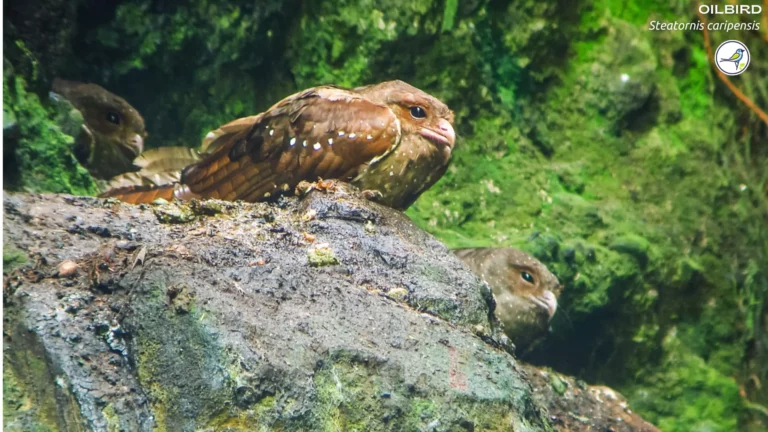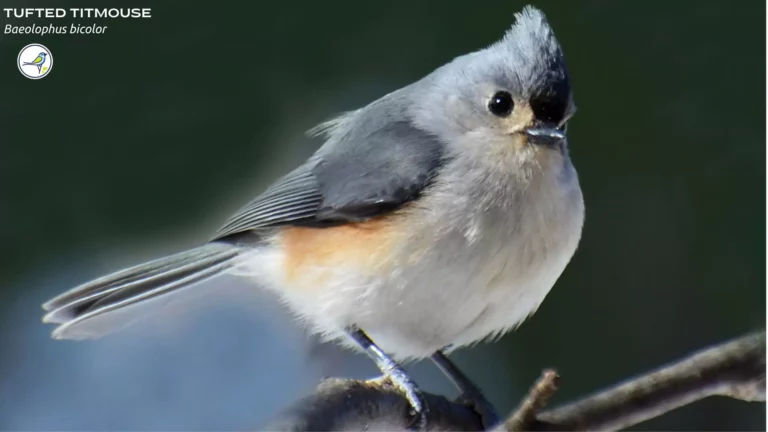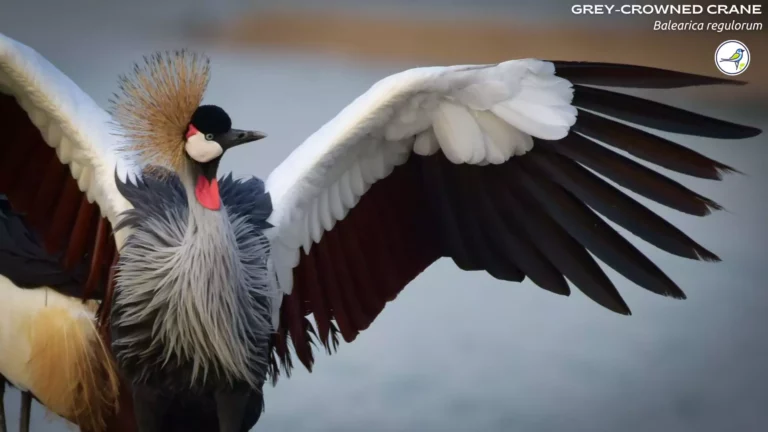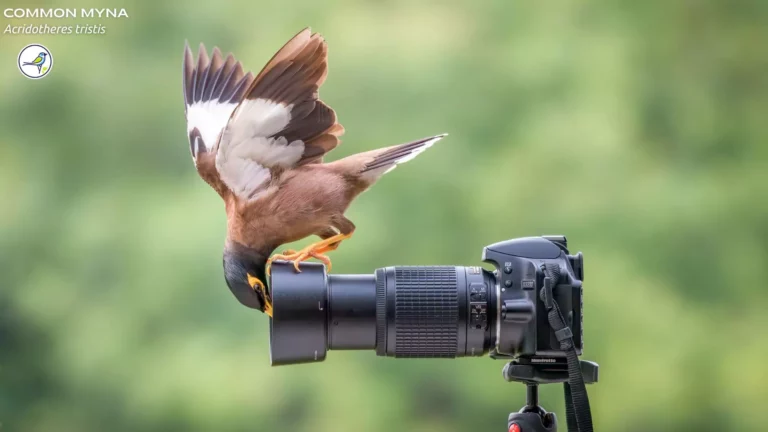List of Different Types of Sparrows
When we think of the avian world, our thoughts often turn to majestic eagles, colorful parrots, or elusive owls. Yet, amidst this vibrant tapestry of feathered creatures, there’s a small, unassuming group of birds that holds its own unique charm – sparrows. These unpretentious little birds may not boast the flamboyant plumage of some of their avian counterparts, but they have carved out a niche for themselves in our everyday lives.
Sparrows are a ubiquitous presence across the globe, dwelling in diverse environments, from bustling urban centers to serene rural landscapes. Their adaptability and resilience have earned them a place in our hearts and culture. In this blog post, we embark on a journey to explore the captivating world of sparrows.
We’ll delve into the lives of various sparrow species, each with its own set of characteristics, behaviors, and habitats. From the House Sparrow’s urban charisma to the melodious Song Sparrow’s enchanting notes, these birds contribute to the rich tapestry of our natural world. Moreover, sparrows play essential roles in their respective ecosystems, participating in pollination and seed dispersal, and even acting as indicators of environmental health.
As we dive into the fascinating world of sparrows, we’ll discover their diverse range and the distinctive traits that set each species apart. Beyond identification and habitat, we’ll explore their unique behaviors, nesting habits, and the challenges they face in an ever-changing world.
So, whether you’re an avid birder, a nature enthusiast, or simply someone curious about the avian neighbors in your backyard, join us on this avian adventure as we shed light on the lesser-known but highly intriguing world of sparrows.
List of Sparrows
1. House Sparrow (Passer domesticus)

Description and Habitat: The House Sparrow (Passer domesticus), also known as the English Sparrow, is a small passerine bird that has adapted remarkably well to urban environments. Recognizable by its brownish-gray plumage, the male House Sparrow features a black bib on its throat during the breeding season. Females are typically less conspicuous with mottled brown feathers. House Sparrows are incredibly adaptable birds, and they can be found virtually worldwide. They are often seen in cities, towns, and rural areas, often nesting near human settlements. Their preference for man-made structures, such as buildings, bridges, and eaves, makes them a common sight in urban landscapes.
Interesting Facts: House Sparrows are highly social birds and often form large, chattering flocks. They are known for their cheerful chirping, which adds to the urban soundscape. These sparrows are opportunistic feeders, consuming a varied diet that includes seeds, grains, insects, and even human food scraps. Their nesting habits are intriguing, as they construct untidy nests in nooks and crannies, sometimes in cavities of buildings.
Attracting House Sparrows: To attract House Sparrows to your garden or backyard, consider providing bird feeders with a mix of seeds and grains. You can also offer water sources like bird baths. Ensure there are sheltered nesting spots or nest boxes in your vicinity. Be cautious, though, as House Sparrows can sometimes dominate and displace native bird species.
2. Eurasian Tree Sparrow (Passer montanus)

Description and Habitat: The Eurasian Tree Sparrow (Passer montanus) is a charming and distinctive bird known for its unique features and habitat preferences. These sparrows are slightly smaller than their more common House Sparrow relatives, measuring around 5.5 inches in length. What sets them apart is their chestnut-brown crowns, white cheeks, and black patches on their cheeks, creating an endearing, contrasting appearance. Eurasian Tree Sparrows are primarily native to Europe and Asia, where they tend to avoid densely populated urban areas. Instead, they favor rural landscapes, woodlands, farmlands, and villages. They are well adapted to nesting in tree cavities, hence the name “Tree Sparrow.” Unlike House Sparrows, which often choose buildings as nesting sites, these sparrows opt for the nooks and crannies of trees, providing them with a more secluded nesting environment.
Interesting Facts: Social Nesting Habits: Eurasian Tree Sparrows are highly social birds that tend to nest in colonies, often in close proximity to each other. This social behavior helps them maintain close-knit communities within their chosen habitats. Their diet primarily consists of seeds, grains, and small insects. During the breeding season, they shift their focus towards insects, which provide essential protein for their growing chicks.
Conservation Concerns: In some regions, Eurasian Tree Sparrow populations have faced challenges due to habitat loss and competition with House Sparrows. Monitoring and conservation efforts are in place to ensure their continued survival in their native range.
Attracting Eurasian Tree Sparrows: If you want to attract Eurasian Tree Sparrows to your garden or property, consider the following tips: Place nest boxes in suitable locations on your property. These nest boxes mimic natural tree cavities and can provide safe nesting sites for these sparrows. Eurasian Tree Sparrows enjoy seeds and grains. Fill bird feeders with a variety of seeds to attract them. During the breeding season, consider offering insects like mealworms for added protein. Create a bird-friendly environment with trees and shrubs that provide shelter and foraging opportunities. Avoid using pesticides that may harm the insects they rely on for food.
By understanding the unique features, habits, and preferences of Eurasian Tree Sparrows, you can take steps to create an inviting environment that encourages their presence and contributes to their well-being.
3. Rock Sparrow (Petronia petronia)

Description and Habitat: The Rock Sparrow (Petronia petronia) is a unique and distinctive bird with remarkable features and habitat preferences. These sparrows are slightly larger than many common sparrow species, measuring around 6 inches in length. Their plumage is a mix of gray and brown with bold, dark streaks on their back, wings, and head. What truly sets them apart is their strong, conical bill, perfectly adapted for their rocky and arid habitats. Rock Sparrows are well-suited to rocky and arid regions, including mountainous areas, cliffs, and rocky outcrops. They have a remarkable ability to thrive in environments where few other bird species can. These birds are often found nesting in crevices in rocky cliffs and foraging for seeds, insects, and small invertebrates in their harsh, rocky surroundings.
Interesting Facts: Rock Sparrows have a preference for nesting in rocky crevices or holes in cliffs. They use these protected locations to safeguard their nests and young from potential predators and harsh weather conditions. In some regions, Rock Sparrows are known for their nomadic behavior, wandering in search of suitable breeding sites and food sources. This can make their populations challenging to predict and monitor. Their sturdy bill allows them to efficiently crack open seeds, a valuable adaptation for surviving in arid and rocky environments with limited food resources.
Attracting Rock Sparrows: If you want to attract Rock Sparrows to your property or garden, here are some tips: Create rocky areas or add large stones and boulders to your garden to mimic their natural habitat. Although Rock Sparrows typically nest in natural rock crevices, you can provide nesting boxes designed to replicate these rocky sites. Provide a mix of seeds and grains to cater to their dietary preferences, as well as insects to supplement their diet during the breeding season.
By understanding the unique features, habits, and preferences of Rock Sparrows, you can take steps to create an environment that encourages their presence and supports their needs.
4. Song Sparrow (Melospiza melodia)
The avian world is brimming with an array of captivating species, and the Song Sparrow (Melospiza melodia) stands out as a delightful and melodious member of the sparrow family. In this blog post, we embark on a journey to explore the enchanting world of the Song Sparrow.

Description and Habitat: The Song Sparrow, scientifically known as Melospiza melodia, is a small yet charismatic bird with streaked brown plumage, a central chest spot, and a cheerful appearance. These sparrows are commonly found across North America, inhabiting a wide range of ecosystems, from forests and wetlands to urban gardens and parks. Their adaptability to diverse environments has allowed them to thrive in both rural and urban settings.
Interesting Facts: What sets the Song Sparrow apart is its enchanting song. These birds are gifted vocalists, with songs that vary from region to region. The male Song Sparrow serenades potential mates with a delightful melody, characterized by a series of melodious phrases. Their singing is not only beautiful but also serves as a vital component of their courtship and territorial defense. During the breeding season, their songs fill the air, adding to the symphony of nature.
Conservation and Efforts: Song Sparrows play essential roles in the ecosystems they inhabit. Their foraging behavior aids in controlling insect populations, and their consumption of plant seeds contributes to seed dispersal, influencing local plant diversity. These sparrows are considered indicators of environmental health, and understanding their significance can help in monitoring ecosystem well-being and preserving their habitats.
Attracting Song Sparrows: Offer bird feeders with a variety of seeds and grains, as well as water sources like bird baths. Create sheltered nesting spots or nest boxes in your vicinity to provide safe nesting sites. Be mindful of other bird species, as Song Sparrows may sometimes dominate and displace native birds.
5. Chipping Sparrow (Spizella passerina)
In the world of avian wonders, the Chipping Sparrow (Spizella passerina) is a small but charming bird that adds its own unique character to the avian tapestry. In this blog post, we delve into the world of the Chipping Sparrow, exploring its habitat, interesting facts, and the distinctive qualities that make it a beloved member of the sparrow family.

Description and Habitat: The Chipping Sparrow, scientifically known as Spizella passerina, is a delightful bird with a plain yet endearing appearance. It features a bright rufous cap atop its head and a plain grayish-brown body with a distinct white eyebrow stripe. These sparrows are commonly found throughout North America, with a wide range that extends from southern Canada to parts of Central America. Chipping Sparrows tend to inhabit a variety of environments, including open woodlands, grasslands, gardens, and suburban areas. They often choose nesting sites in trees or shrubs.
Interesting Facts: Distinctive Song: One of the notable features of the Chipping Sparrow is its song, often described as a series of sharp, dry chips, which gave rise to its name. Their songs are cheerful and lively, often punctuating the quiet of a garden or wooded area. Nesting Habits: Chipping Sparrows are known for their neat and well-constructed nests, typically built in the branches of trees or shrubs. Their nests often include fine grasses and rootlets, providing a cozy cradle for their young. Dietary Preferences: These sparrows have a diet that mainly consists of seeds and insects, making them valuable contributors to ecosystem balance by helping control insect populations.
Conservation and Efforts: Chipping Sparrows are widespread and relatively common throughout their range, but like many other bird species, they can still face threats from habitat loss and environmental changes. Encouraging the planting of native trees and shrubs in gardens and green spaces can provide valuable habitat for these sparrows and other bird species.
Attracting Chipping Sparrows: Provide bird feeders with a mix of seeds, including millet and sunflower seeds, which are among their preferred foods. Create a bird-friendly environment with trees, shrubs, and open spaces where they can forage and build their nests.
6. Golden-crowned Sparrow (Zonotrichia atricapilla)
In the world of avian wonders, the Golden-crowned Sparrow (Zonotrichia atricapilla) shines as a feathered gem. In this blog post, we delve into the captivating world of the Golden-crowned Sparrow, exploring its unique characteristics, habitat, and the intriguing qualities that set it apart in the avian landscape.

Description and Habitat: The Golden-crowned Sparrow, scientifically known as Zonotrichia atricapilla, is a distinctive bird adorned with a striking black crown bordered by a golden-yellow stripe. This crown is its hallmark feature, making it easily recognizable. These sparrows are primarily found along the western coast of North America, from Alaska to northern California, and they have a preference for habitats with dense shrubs, brushy areas, and open woodlands.
Interesting Facts:
- Distinctive Plumage: The Golden-crowned Sparrow’s vibrant crown makes it a standout in the world of sparrows. The bold black and gold combination is a true marvel of nature.
- Winter Migration: These sparrows are known for their winter migrations to the southern United States. During this time, they can be spotted in various states beyond their breeding range.
- Melodic Songs: While their appearance is stunning, they also possess melodic songs. Their songs often consist of a series of clear whistles that add to the symphony of nature.
Conservation and Efforts: Golden-crowned Sparrows are considered a species of “Least Concern” by the International Union for Conservation of Nature (IUCN). However, their populations can be affected by habitat loss and changes in vegetation due to human activities. Efforts to preserve their preferred habitats are essential for ensuring the well-being of these beautiful birds.
Attracting Golden-crowned Sparrows: Offer bird feeders with seeds such as millet, sunflower seeds, and cracked corn, which are among their favored foods. Provide shrubby and brushy areas where they can find cover and forage for insects.
Where to Find Sparrows in the United States: A Birdwatcher’s Guide
Sparrows are a diverse and fascinating group of birds that can be found across the United States. In this article, we’ll guide you to the best locations to spot various sparrow species in different regions of the country, offering both bird enthusiasts and nature lovers the opportunity to witness these captivating creatures in their natural habitat.
1. Habitat and Range
Sparrows are highly adaptable and can be found in a wide range of habitats across the United States. These habitats include:
- Suburban Areas: Many sparrow species, such as House Sparrows, adapt well to suburban environments and are often seen in neighborhoods, parks, and gardens.
- Grasslands and Prairies: Sparrows like the Savannah Sparrow and Vesper Sparrow thrive in open grasslands and prairies, where they forage for seeds and insects.
- Wetlands: You can encounter sparrows like the Swamp Sparrow and Song Sparrow in marshes, wetlands, and along the edges of ponds and lakes.
2. Best Locations:
For avid birdwatchers, here are some of the best locations known for their diverse sparrow populations:
- Central Park, New York City, New York: This urban park offers a surprising variety of sparrow species, including Song Sparrows, White-throated Sparrows, and more.
- Bosque del Apache National Wildlife Refuge, New Mexico: Explore the wetlands and fields to spot sparrows such as the Savannah Sparrow and White-crowned Sparrow.
- Midwest Prairies: The prairies of states like Kansas, Nebraska, and South Dakota are prime spots for encountering grassland sparrows.
3. Seasonal Variations:
Sparrow species exhibit variations in their presence throughout the year. While some sparrows are year-round residents, others may migrate seasonally. Spring and fall migration periods are excellent times to observe a variety of sparrows.
4. Field Tips for Birdwatchers:
A good pair of binoculars and a field guide will be invaluable in identifying different sparrow species.
Look for sparrows perched on shrubs, in grassy fields, or foraging on the ground for seeds and insects.
5. Conservation and Ethical Birdwatching:
Practicing ethical birdwatching is crucial to preserving these avian treasures. Respect nesting areas, keep a respectful distance, and avoid disturbing their habitats.







